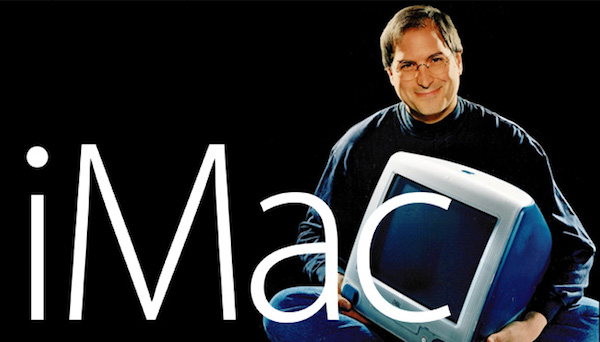Jobs had to fend off the objections of the manufacturing engineers, supported by Rubinstein,
喬布斯還要面對制造工程部門的反對,這些反對者得到了魯賓斯坦的支持。
who tended to raise practical cost considerations when faced with Ive's aesthetic desires and various design whims.
面對艾弗對美學的需求和“異想天開”,魯賓斯坦提出了現實的關于成本的考慮。
"When we took it to the engineers," Jobs said, "they came up with thirty- eight reasons they couldn't do it.
“當我們把做提手的建議提交給工程部門時,”喬布斯說,“他們提出了38種不能這么做的理由。
And I said, 'No, no, we're doing this.'
然后我就說,‘不,不,我就是要這么做。’
And they said, 'Well, why?'
然后他們問,‘那么,為什么?’
And I said, 'Because I'm the CEO, and I think it can be done.'
我回答道,‘就是因為我是CEO,我認為這么做沒問題。’
And so they kind of grudgingly did it."
結果他們就這么不情愿地照做了。”
Jobs asked Lee Clow and Ken Segall and others from the TBWA\Chiat\Day ad team to fly up to see what he had in the works.
喬布斯還邀請TBWA\Chiat\Day廣告公司的李·克勞和肯·西格爾一行人來到蘋果,看看這里正在做的事情。
He brought them into the guarded design studio and dramatically unveiled Ive's translucent teardrop-shaped design,
他把他們帶進戒備森嚴的設計工作室,并戲劇性地展示了艾弗設計的半透明的淚滴形外殼,
which looked like something from The Jetsons, the animated TV show set in the future.
看起來很像20世紀80年代一部電視動畫片《杰森一家》里關于未來的場景。

For a moment they were taken aback.
在那一瞬間,他們就像回到了從前。
"We were pretty shocked, but we couldn't be frank," Segall recalled.
“我們非常震驚,但沒人敢說出來。”西格爾回憶道,
"We were really thinking, 'Jesus, do they know what they are doing?' It was so radical."
“我們的真實想法是,‘天哪,他們知道自己在做什么嗎?’這簡直太出格了。”
Jobs asked them to suggest names. Segall came back with five options, one of them "iMac."
喬布斯請他們給這臺計算機起個名字。西格爾給出了五個,其中一個就是“iMac”。
Jobs didn't like any of them at first, so Segall came up with another list a week later,
起初,喬布斯哪個都不喜歡,所以西格爾在一周后又拿出了一張列表,
but he said that the agency still preferred "iMac."
但是他說他的公司還是更傾向于“iMac”。
Jobs replied, "I don't hate it this week, but I still don't like it."
喬布斯回答說,“現在我倒覺得這個名字不那么討厭了,不過也算不上喜歡。”
He tried silk-screening it on some of the prototypes, and the name grew on him. And thus it became the iMac.
隨后他試著把這個名字印在一些模型上,然后接受了它。iMac的名稱由此誕生。











